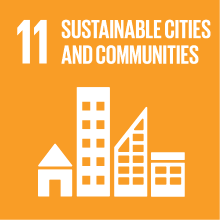ITALIAN PRE-ROMAN CIVILIZATION
- Academic year
- 2020/2021 Syllabus of previous years
- Official course title
- CIVILTA' DELL'ITALIA PRE-ROMANA
- Course code
- FM0553 (AF:340325 AR:181180)
- Teaching language
- Italian
- Modality
- On campus classes
- ECTS credits
- 6
- Degree level
- Master's Degree Programme (DM270)
- Academic Discipline
- L-ANT/06
- Period
- 2nd Semester
- Where
- VENEZIA
- Moodle
- Go to Moodle page
Contribution of the course to the overall degree programme goals
It will be analyzed relationships with etrusco-italic, Mediterranean and European cultures; we pay attention to the chronological items and to material culture.
Our main focus is to improove ability to make chronological references for archaeological evidence of etruscan art and civilisation.
Expected learning outcomes
- To know basic archaeological and technical terminology
- To Know development of settlements and cities in Venetic area
- To Know main theoretical models to analize urban societies
- To know main features of local material culture
2. Ability to apply knowledge and understanding
- To be able to employ archaeological and technical terminology
- To be able to apply theoretical models for the development of Venetic culture and landscape
- To be able to analyze to analyze settlements and cities
- To be able to analyze examples of material culture and artistic finds
3. Judgment skills
- To be able to judge and argue hypothesis about venetic contexts
4. Communication skills
- To be able to tell new finds or results of the research with a plain and technical terminology
- To be able to compare themselves with colleagues and tutor, even on.line
5. Learning ability
- To be able to take notes and to share them with colleagues, even on line
- To be able to consult bibliographic references even with a critical point of view
Pre-requirements
Contents
Referral texts
D’Agostino B. 1985, Società dei vivi, comunità dei morti: un rapporto difficile, in “Dialoghi di Archeologia” III,I, pp. 47-58.
Bietti Sestieri A.M. 1992, La necropoli laziale di Osteria dell'Osa, Roma.
Esposito A. 2018, La necropoli di Pontesanto a Imola, Arimnestos. Ricerche di Protostoria mediterranea, I, pp. 187-206
Cuozzo M.A. 2003, Reinventando la tradizione. Immaginario sociale, ideologie, e rappresentazione nelle necropoli orientalizzanti di Pontecagnano, Paestum.
Angelini R., Bentini L., Rodriguez E., von Eles P. 2015, Ritualità funeraria tra Veneto e Verucchio (Rinini) nell'età del Ferro: un confronto possibile ?, in Leonardi G., Tiné V. ( a cura di), Preistoria e Protostoria del Veneto, atti della XLVIII riunione dell'IIPP (Padova 2013), Firenze 2015, pp. 533-540.
Nizzo V. 2015, Archeologia e antropologia della morte. Storia di un'idea, Bari.
Pacciarelli M. 2001, Dal villaggio alla città. La svolta protourbana del 1000 a.C. nell'Italia tirrenica, Firenze.
Ruta Serafini A. 2013, Alla riva che non ha sole, alla riva delle tenebre, in M. Gamba, G. Gambacurta, A. Ruta Serafini, F. Veronese, V. Tiné, Venetkens. Viaggio nella terra dei Veneti antichi, catalogo della mostra, Venezia, pp. 93-97.
For a deeper knowledge and for non-attending students, to agree with the teacher:
D’Agostino B. 1977, Tombe principesche dell’Orientalizzante antico da Pontecagnano, in “Monumenti Antichi dei Lincei”, serie misc. II,2, pp. 1-110.
Peroni R (a cura di ) 1981, Necropoli e usi funerari nell’età del ferro, Bari.
Boiardi A., von Eles P. 2006, Codici funerari: dalle “regole” alla situazione “eccezionale” o viceversa ?, in Studi di Protostoria in onore di Renato Peroni, Firenze, pp. 602-608.
Bianchin Citton E., Gambacurta G., Ruta Serafini A. (a cura di) 1998, … ‘presso l’Adige ridente ‘… Recenti rinvenimenti archeologici da Este a Montagnana, catalogo della mostra, Padova.
Pastrioti G., Voltolini D. 2018, Il prestigio oltre la morte. Le necropoli picene di Contrada Cugnolo a Torre di palme, Fermo.
in generale l'età del ferro in Leonardi G., Tiné V. ( a cura di), Preistoria e Protostoria del Veneto, atti della XLVIII riunione dell'IIPP (Padova 2013), Firenze 2015.
Assessment methods
Type of exam
Teaching methods
Lectures and exercises
On.line papers for specific topics.
2030 Agenda for Sustainable Development Goals
This subject deals with topics related to the macro-area "Cities, infrastructure and social capital" and contributes to the achievement of one or more goals of U. N. Agenda for Sustainable Development


